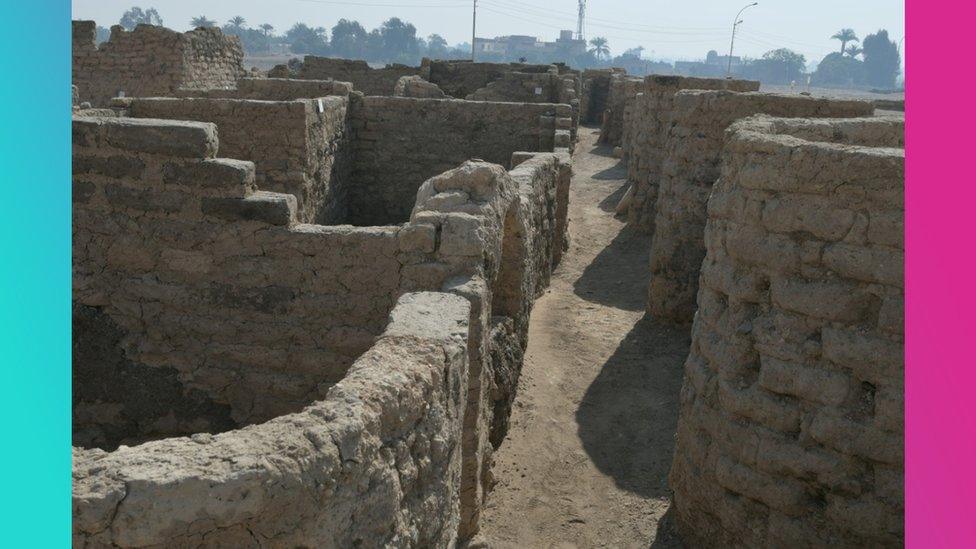What's that smell? New Egyptian mummy research not to be sniffed at
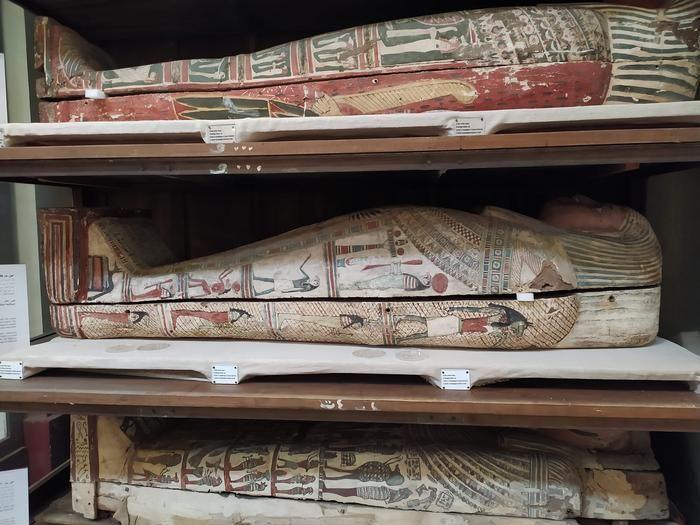
Researchers looked at mummies kept at the Egyptian Museum in Cairo
- Published
Ancient Egyptian mummified bodies are a well known part of human history, but now new research has 'scent' the study of mummies to another level.
Using the help of both human noses and scientific tools, a team in Cairo aimed to work out how a group of mummies smell today.
It was hoped the scent-focused research could give experts a better idea of how well preserved the mummies are, and what materials and chemicals were used for mummification.
More mummy stories
Ancient mummies with golden tongues discovered in Egypt
- Published8 December 2022
World's oldest cheese found buried with mummies in China
- Published26 September 2024
Mummies and objects found in Egypt 'rewrite history'
- Published18 January 2021
What exactly are mummies?
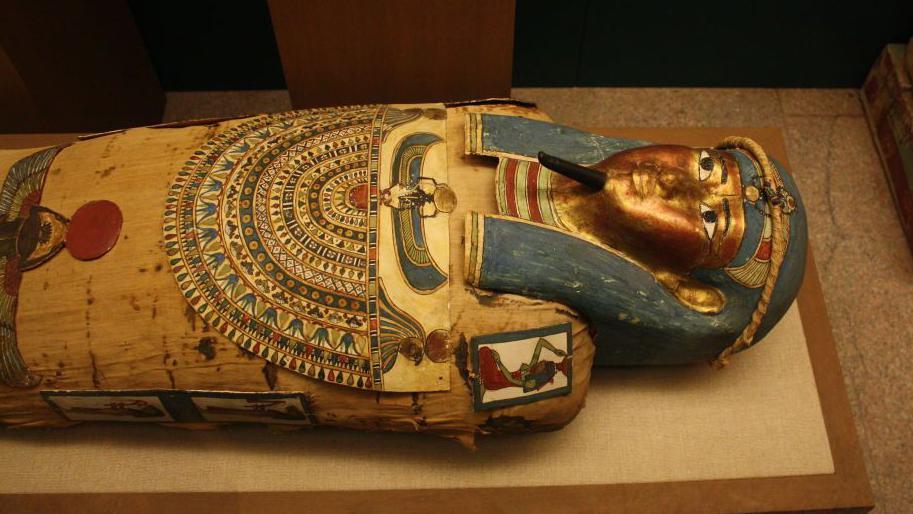
The mummification of bodies was an important practice in ancient Egypt
Ancient Egyptians used a special process to treat the bodies of people who had died called mummification.
The bodies were cleaned, dried out and then embalmed with substances including oils, animal fats and waxes to help preserve them so they didn't decay.
The smell of the bodies during the process was a big deal for the ancient Egyptians, as pleasant scents were linked to gods and their purity, while horrible odours were indications of a body's corruption and decay.
How was the study carried out?
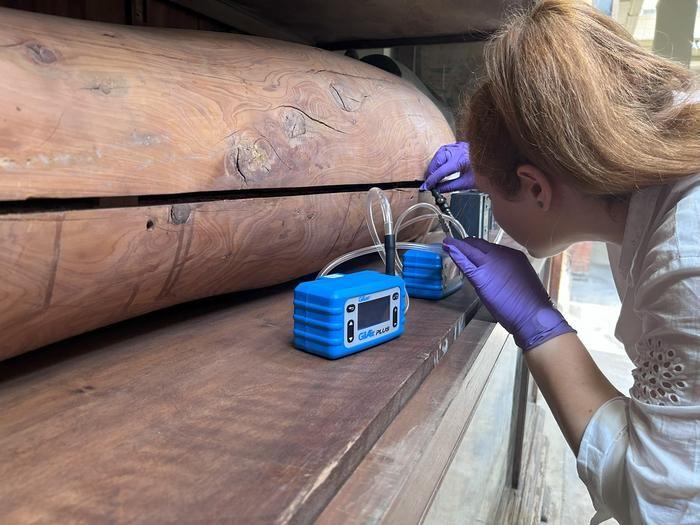
Small tubes and pumps were used to extract air from around each mummy
The researchers took a look at a collection of nine mummies at the Egyptian Museum in Cairo.
The preserved bodies are believed to date all the way back to a time period between 1500 BC and 500 AD.
Five of the mummies had been kept in the storage area, while the other four were kept in glass and wooden display cases in the exhibition area.
Small tubes and pumps were used to extract some of the air from around each mummy which was then whiffed from a bag by a group of expert sniffers.
They were tasked with judging the quality, intensity and pleasantness of the scents they encountered.
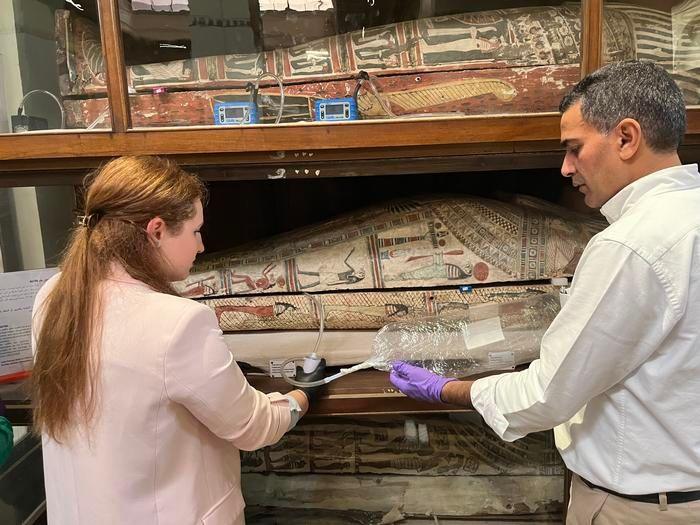
The researchers analysed nine different mummies
13 different words were used to describe the smell of the air samples including spicy, woody, mouldy, sweet, floral, smoky and even stale or rancid.
They then used other scientific techniques alongside the sniffing to identify the chemical make up of the smells.
This helped them work out whether the scents came from the mummies themselves, from products used to conserve them, pesticides that may have been added later, or from their natural break-down over time as a result of mould, bacteria and other microorganisms.
The research also showed that studying scents from various parts of the mummies is an effective way to analyse ancient remains without tampering or risking damage to them.
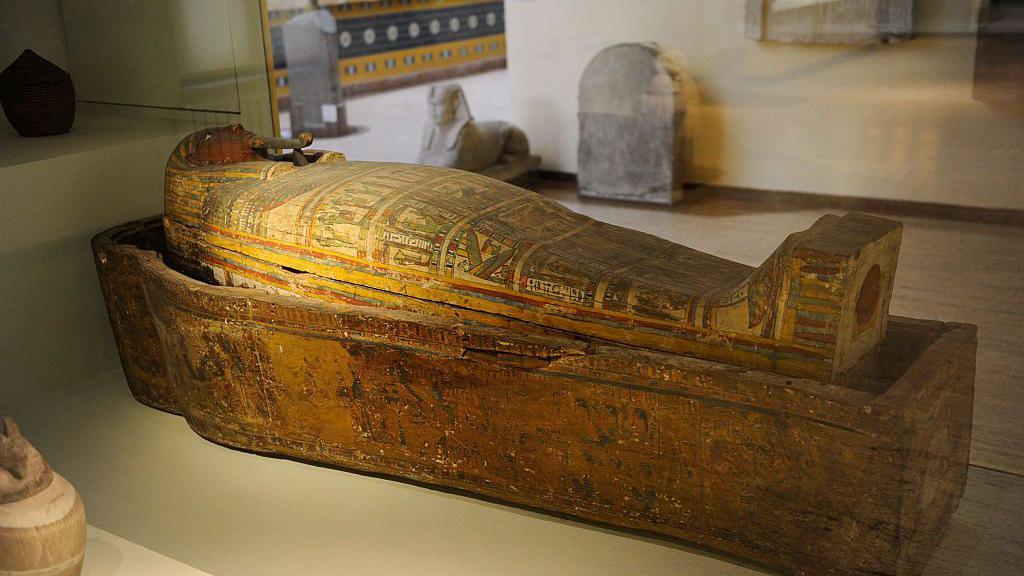
The findings provided the scientists with clues about what types of materials were used in mummification, how the practices and ingredients changed over time and how museums have gone on to keep mummy remains.
Dr Cecilia Bembibre, co-author of the study said it was 'exciting' and a 'privilege' to take part.
"Just the idea that you can put your nose to that little tube and smell a mummified body with 3,500 years of history and then, the most surprising thing, still get a whiff of something so incredibly familiar as tea … that was surprising, because some smells were really familiar," Dr Bembibre said.
It's hoped studies like this can help those responsible for looking after ancient artefacts like mummies to better preserve their original traits, including their smells.
The research could also help museums to give visitors a richer experience by creating 'smellscapes' in the near future, encouraging people to use their noses when interacting with ancient items.
More on ancient Egypt
- Published30 May 2024
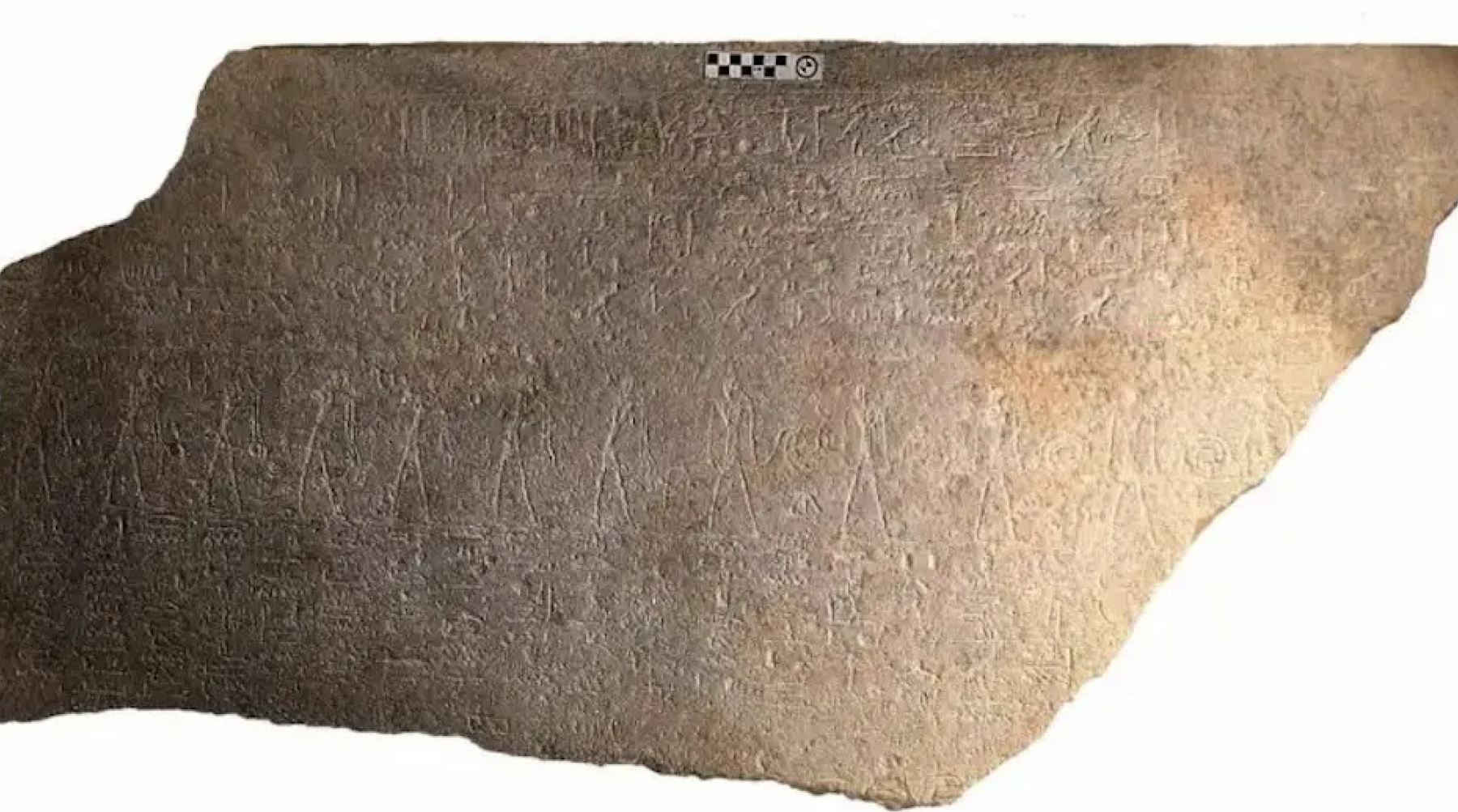
- Published17 May 2024
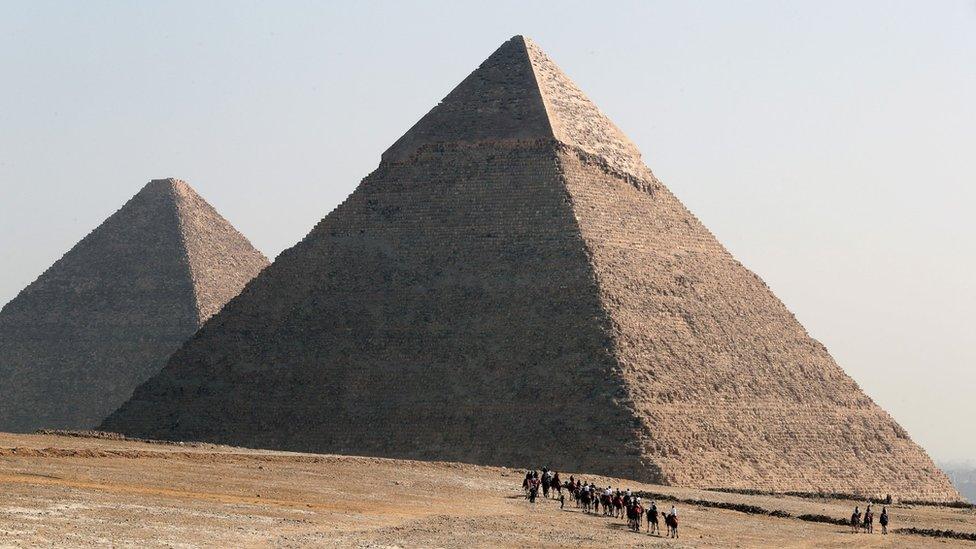
- Published9 April 2021
